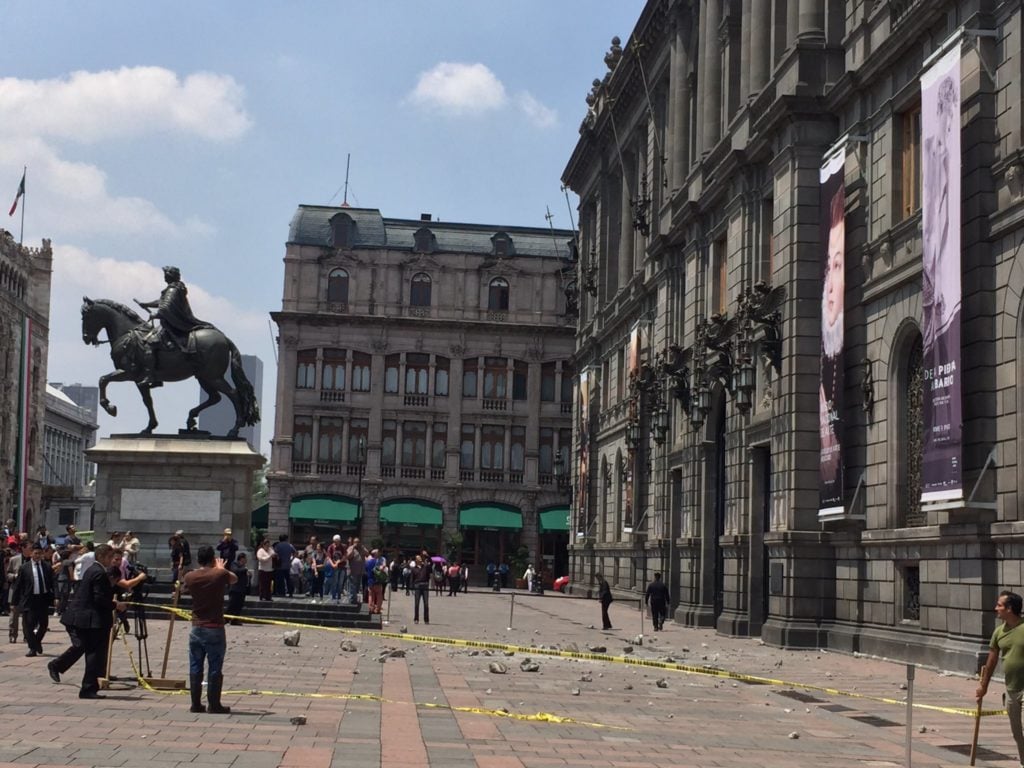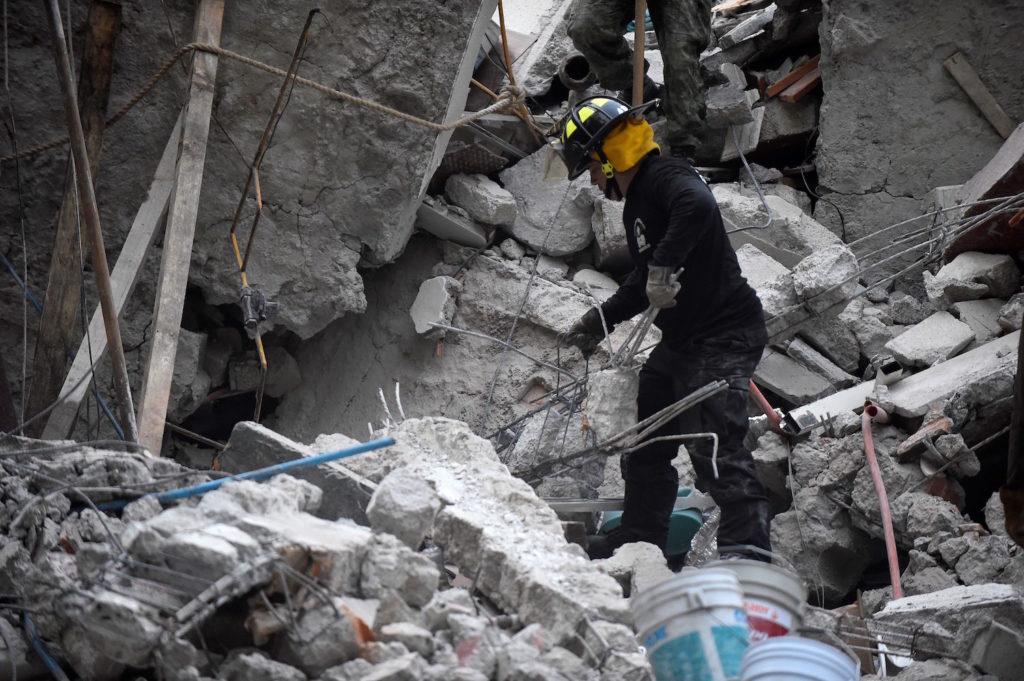Art World
As Mexico Searches for Survivors After Massive Quake, Museums Scramble to Locate Staff and Assess the Damage
The 7.1 magnitude earthquake has left hundreds dead.

The 7.1 magnitude earthquake has left hundreds dead.

Sarah Cascone &
Henri Neuendorf

A massive 7.1 magnitude earthquake struck Mexico early Tuesday afternoon, and early estimates place the death toll at over 200. As authorities scramble to search for survivors and to reestablish communication channels, cultural institutions are among those trying to cope with the disaster. Information has been slow to emerge, but some local institutions have taken to social media as they work to assess the well-being of their staffs and the condition of their physical plants.
According to the US Geological Survey and the National Seismological Service of Mexico, the epicenter of the Puebla state earthquake was 31.4 miles (55 km) south-southwest of the city of Puebla and 75 miles from Mexico City. (The two cities are about a two-hour drive apart.)
Museums in Mexico City include the Museo Nacional de Arte, the Museo Frida Kahlo, the Museo Jumex, the Instituto Nacional de Antropología e Historia, the Palacio de Bellas Artes, and the Museo Nacional de Antropologia e Historia.
Puebla is home to the Museo Amparo art museum and the Museo Internacional del Barroco, which opened to some fanfare in 2016 in a new building designed by Japanese architect Toyo Ito. The local exhibition center, the Centro Expositor y de Convenciones de Puebla, has been converted into an emergency shelter following the quake, according to the Museos Puebla Twitter account.
artnet News has reached out to all of those institutions and will update this story as additional information becomes available.
In a post on Facebook and Twitter, the Museo Nacional de Antropologia e Historia reported that all staff was safe. Other museums, monuments, and archaeological sites appear to have been affected by the earthquake, and many institutions and archaeology sites in Mexico City and the states of Hidalgo, Morelos, Puebla, and Tlaxcala are currently closed as a safety measure.

Volunteers remove rubble during the search for survivors in a flattened building in Mexico City on September 20, 2017 after a strong quake hit central Mexico on the eve killing at least 240 people.
Courtesy of Pedro Pardo/AFP/Getty Images.
The Museo Frida Kahlo and Museo Amparo both announced on Twitter that they were closed, the latter promising additional information to come. The Palacio de Bellas Artes also plans to do a thorough inspection and reopen when it is safe to do so, according to the institution’s Twitter.
Meanwhile, the Museo Soumaya, which houses the collection of billionaire Carlos Slim, announced on Twitter that “All is well” on Tuesday night. The Museo Nacional de Arte also shared a tweet indicating that it escaped with only minor damage to the building’s facade, while a representative of the Museo Jumex emailed artnet News saying that the “staff are safe and that the building, the collection, and the artworks inside the museum sustained no damage.”
Cristina O. Nava of Gallery Week Mexico told artnet News in an email that as things stand “it seems like most of the galleries don’t have any serious damage,” but stressed that they are assessing the developing situation. She added that Gallery Week, which was scheduled to start on Thursday, has been “postponed until further notice.”
“We are all safe: staff, artists, their families, building, inventory,” Pamela Echeverria of Mexico City’s Labor gallery told artnet News in an email, noting that it is a tough time for the country. “Solidarity is one of our main ‘assets’ so in the middle of everything, it feels good to go out in the streets and witness everybody is helping and supporting each other,” she wrote.
In an email, Amelia Hinojosa of Kurimanzutto said the gallery, artists, facilities, and artworks were largely unscathed by the quake and that staff had spent their morning organizing to mobilize food, water, tools and medicines to help those less fortunate. “There is a lot to do,” she said.
Eva Pedersen of Mexico City’s OMR gallery told artnet News that the staff and artists are “okay, but pretty shaken up,” she added that the gallery and some artworks suffered minor damage.
Located at the intersection of several tectonic plates, Mexico is prone to seismic activity. Tuesday’s disaster took place 32 years to the day after the devastating 1985 Mexico City quake, which measured 8.1 on the Richter scale and left 10,000 dead. In remembrance of those lost, the country carried out a national earthquake drill a mere two hours before the Puebla quake.
See video of the quake striking the Museo Nacional de Antropologia e Historia below: